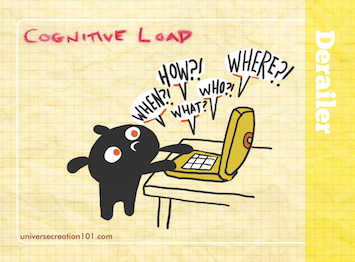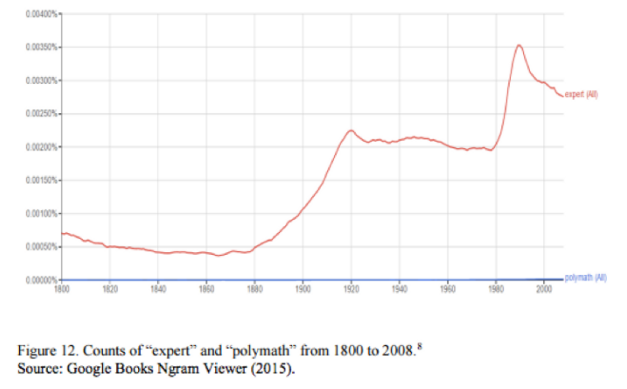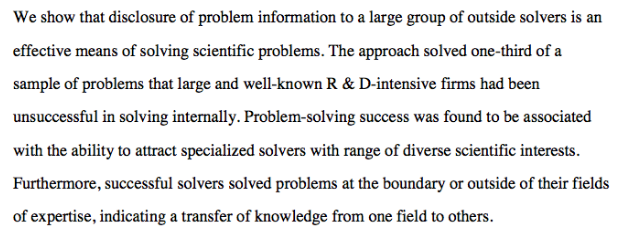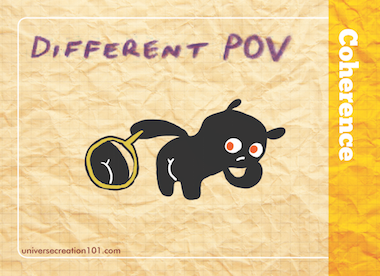Transmedia Teen
An Immerse response

I don’t have children myself. My brother has children that I smile at from afar on Facebook. I keep an eye on them and make sure they’re okay. Transmedia isn’t mine either, but I keep an eye on her too. She isn’t around home like she used to be. Some of you are wondering where she is, asking: What happened to her? She is fine. Transmedia is a tween.
She has grown up! She doesn’t need us around all the time, doesn’t need anyone to carry her, dress her, feed her. That is why it seems quieter. By Andrea’s reckoning there are only three fathers out there, meeting at the park around the transmedia hashtag. But she has grown up, so evangelists aren’t needed as much as before.
She needs a different kind of parenting now (and don’t forget to include all the mothers next time too). There are plenty of parenting books out there (some for kids, some for tweens), including:
- Getting Started in Transmedia Storytelling: A Practical Guide for Beginners Second Edition
- Storytelling Across Worlds: Transmedia for Creatives and Producers
- Transmedia Television: Audiences, New Media, and Daily Life
- Transmedia 2.0: How to Create an Entertainment Brand Using a Transmedial Approach to Storytelling
- Fantastic Transmedia: Narrative, Play and Memory Across Science Fiction and Fantasy Storyworlds
- Game Play: Paratextuality in Contemporary Board Games
- Transmedia Television: New Trends in Network Serial Production
- Crossmedia Innovations: Texts, Markets, Institutions
- Narratavis Transmedia: Cuando Todos Los Medios Cuentan
- Transmedia Marketing: From Film and TV to Games and Digital Media
- Transmedia Storytelling: The Librarian’s Guide
- Make Your Story Really Stinkin’ Big
- Storyscaping: Stop Creating Ads, Start Creating Worlds
And what about transmedia projects? They’re everywhere! They just don’t dress like they used to, or like you did when you were younger. They act differently, and certainly don’t the use the same language as us.
They’re in:
- the global mixed reality game Pokémon Go,
- the band who is releasing a board game,
- The Mr Robot VR Experience,
- the collection of indie game developers showing their games in “non-traditional” ways,
- the hybrid digital board game Beasts of Balance,
- the theatrical continuation of the Harry Potter novels and films with Cursed Child,
- escape-the-room games,
- secret cinema,
- the digital and analog Haunted Mansion amplified experience of Ghost Post,
- the Agatha Christie augmented reality stamp,
- Björk’s digital exhibition experiences,
- the physical one-person theatre event of Temping,
- the numerous episodic tie-ins by Telltale Games,
- the films, novels, and comics of the Assassin’s Creed games,
- Valve’s Overwatch animated shorts,
- the Quantum Break novelization of the time-shifting videogame,
- the multi-year many-media doc High Rise,
- the VR experience alongside the film Notes on Blindness,
- the Stranger Things 360 Experience,
- the Game of Thrones live VR experience,
- the physical theatre and 360 experience of Ghosts, Toasts, and the Things Unsaid,
- the diegetic novel for Tom Clancy’s The Division: New York Collapse for Ubisoft,
- the Westworld live and VR experience,
- the ARG for the videogame Oxenfree,
- the forthcoming feature film of the videogame Life is Strange,
- the forthcoming feature film of the videogame Firewatch,
- the Australian indie game developer who has been making diegetic content preceding the launch for months,
- and the projects I have been making every year…
We could still ask, though: Why don’t more creatives make transmedia? Oh, a few things. Firstly, it can have a higher cognitive load. As I outline in my forthcoming journal article about “design schema tension,” it takes more effort to work with different mental models of creation: ones that work in film, TV, games, theatre, and so on. But I and others have been uncovering design approaches that reduce these tensions — more on these soon.
 “Cognitive
Load” prototype card from Universe Creation 101’s forthcoming “Cross-Media Kit,” illustrated by
Marigold Bartlett (http://www.universecreation101.com/cross-media-design-kit/)
“Cognitive
Load” prototype card from Universe Creation 101’s forthcoming “Cross-Media Kit,” illustrated by
Marigold Bartlett (http://www.universecreation101.com/cross-media-design-kit/)
For media makers, there is still the fear about being called a “generalist” or a “jack of all trades, master of none” (ignoring the actual last part of the quote “but oftentimes better than a master of one”). Interestingly, the idea that you have to specialize, that there is such a thing as an expert in a field, is a recent social construct.
As Michael Espindola Araki explains, before industrialization objects of knowledge such as books and artworks were limited. Only some people had access to them. If those people had access to many texts — often logic, grammar, rhetoric, arithmetic, music, geometry, astronomy, philosophy, medicine, theology, and jurisprudence — they would be called a polymath, or genius.
But once books were produced en masse, and then later accessible to even more with the web, the notion of a polymath disappeared. Why? It simply is not possible for anyone to know “everything” and that carries over to someone knowing more than one thing. Instead, the new “guru” is the “expert” who specializes. Now, people are less open to others who can actually be good at more than one thing.
 Araki,
M.E. (2015) Polymathic Leadership: Theoretical Foundation and Construct Development, Masters,
University of Pontifical Catolica, Rio De Janeiro
Araki,
M.E. (2015) Polymathic Leadership: Theoretical Foundation and Construct Development, Masters,
University of Pontifical Catolica, Rio De JaneiroTo combat this, it’s important to note the benefit of being someone who comes at things from a different perspective. As Arthur Koestler argued in The Act of Creation, bisociation is creativity. The bringing together of incompatible elements is what artists do. But more recently too, scientists are seeing the benefits of solving problems through “outside solvers” or people who have expertise in another field:
 Lakhani, K.,
Jeppesen, L., Lohse, P., and Jill Panetta (2007)
“The Value of Openness in Scientific Problem Solving”
Lakhani, K.,
Jeppesen, L., Lohse, P., and Jill Panetta (2007)
“The Value of Openness in Scientific Problem Solving”And then there are our other misgivings. Earlier this year I put a call out to my network on Facebook and asked what obstacles, major hurdles, beliefs, or truths stop them or others from doing transmedia. Here are some of their responses (republished with permission):
Budgets! It’s hard to get decent budgets for a comprehensive effort at the very beginning of a project. Sometimes it’s more of a trickle. You do something, client/partner sees it and likes it, then allocates a bit more budget to do more. —Michael Knowlton
I think, increasingly, I’m aware that it’s an activity that only really appeals to a minority. Making something that genuinely appeals to a wide audience, and doesn’t set up a huge power dynamic between your super fans and your casual audience is hard. We end up super serving a small number of participants, and making a thin experience for the majority. This feels like a big barrier to me, and like an obstacle for the maturing of the form.— Kim Plowright
Finding meaningfully sized audiences. It generally seems that transmedia, rather than acting as a multiplier of your potential to reach people in the different mediums, acts as a divider instead.—Morgan Jaffit
Expertise: in those few cases where we’ve found ourselves working on an IP that we could see extending quite naturally across mediums, we have found ourselves at a loss about what to do in those mediums that we have no experience with. Finding people to work with in our OWN medium is bloody difficult. Finding someone with expertise in another medium, who gets what we’re on about and shares our vision…well…that hasn’t happened on any project I’ve been part of. Not yet anyways.”— E.S.Toose
Lack of a trailblazer product with a fresh expiry date and a repeatable business/design model. —Markus Montola
Because it’s new and generally different in format every time the audience don’t understand it, and funders don’t understand it either. So a huge amount of work is needed to educate everyone every time. —Rosie Poebright
A few months have passed since those responses and things have changed. Some of these people are back to making transmedia projects or have the answer to their problems.
She is growing up fast. Now our parenting duties shift to nurture our transmedia tween to be decent, wise, to reach high, think deep, and bring out the best in lots of people. She may rebel, she’s a tween. I intend to rebel.
Indeed, next year I’ll be bringing out my book and design kit that counters the rules/principles/myths of transmedia. I’ve had some epiphanies these last few years, based on my creative projects, lab, discussions, research, observations, and reflections. I think we’ve been looking with the wrong viewpoint at transmedia, and a lot of our problems are being resolved very quickly. We’re growing up alongside her. She is beautiful and very much alive and well, we just need turn around and see her.
 “Different
POV” prototype card for Universe Creation 101’s forthcoming “Cross-Media Kit,” illustrated by
Marigold Bartlett (http://www.universecreation101.com/cross-media-design-kit/)
“Different
POV” prototype card for Universe Creation 101’s forthcoming “Cross-Media Kit,” illustrated by
Marigold Bartlett (http://www.universecreation101.com/cross-media-design-kit/)
Immerse is an initiative of Tribeca Film Institute, MIT Open DocLab and The Fledgling Fund. Learn more about our vision for the project here.